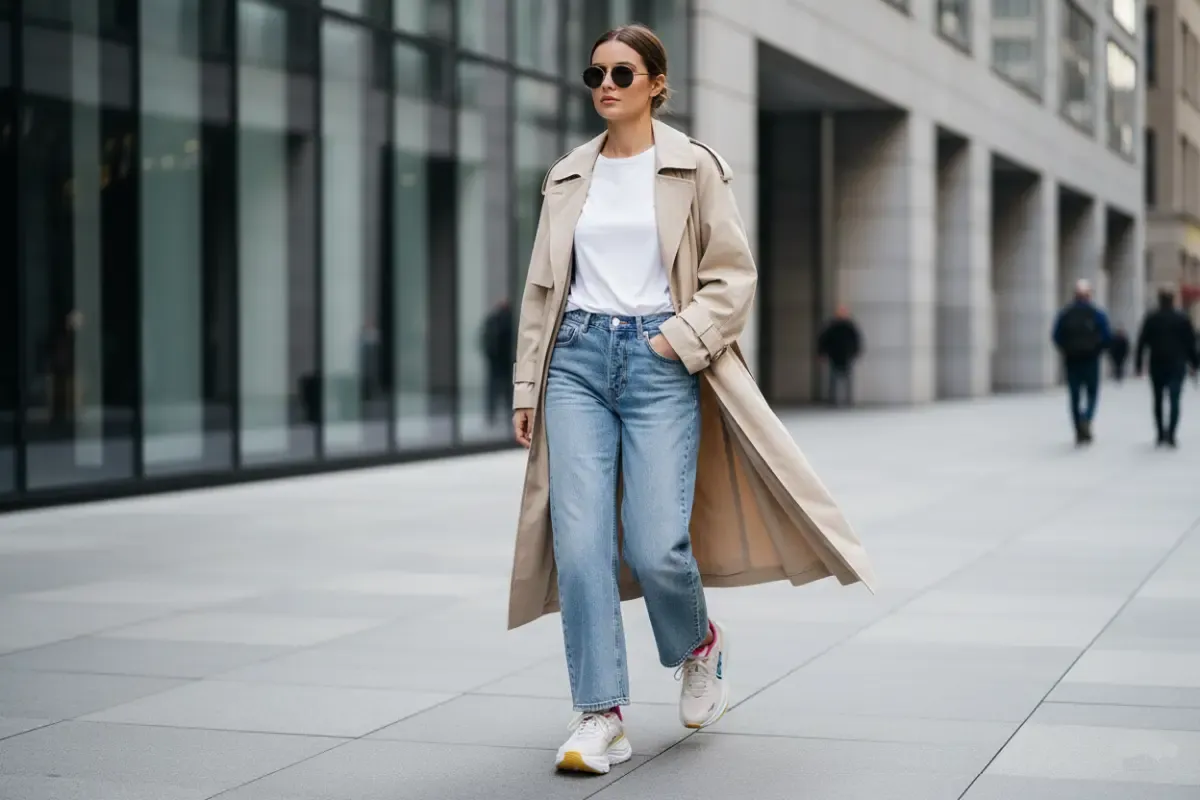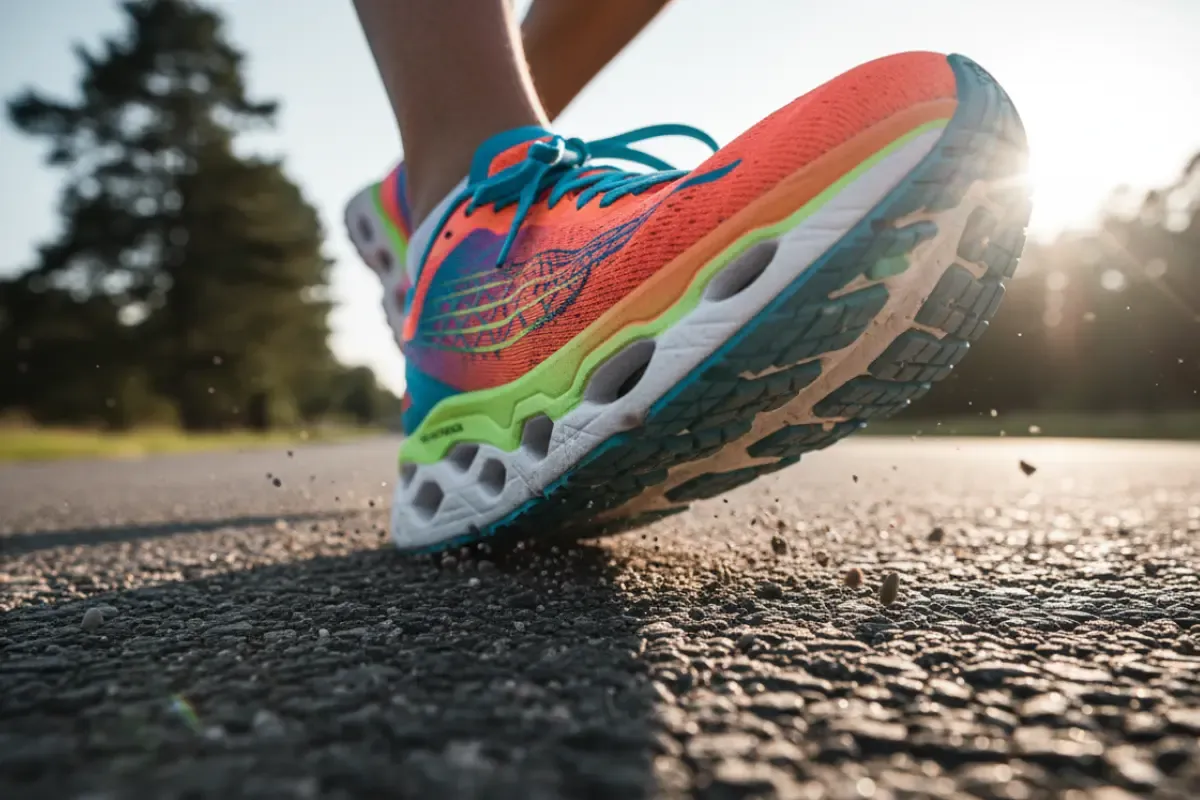
Table of Contents
Ever notice how military styles pop up in fashion, especially sneakers? It's more than just camo; think rugged soles, tough materials, no-nonsense colors. This connection between military utility and civilian style, particularly footwear, has a long, interesting history. It taps into ideas of strength, preparedness, and even rebellion, showing how complex these symbols can be.
Taking gear designed for combat and turning it into a fashion piece is a significant cultural move. It’s about taking something, putting it in a new context, and giving it a new meaning. This process reveals a lot about power and meaning-making in our world.
This article will dive into the design, marketing, and user experiences of popular military-inspired sneakers, plus explore the cultural politics of camouflage in fashion.
Deconstructing the Design: Military DNA in Modern Sneakers
Brands blending military design with civilian footwear balance function with everyday appeal. Several lines do this well, each with roots in military or tactical use.

Take Nike's Special Field Boot (SFB) Series. Engineered for military and first responders, it incorporates serious features: waterproof GORE-TEX fabric, durable synthetic leather, aggressive tread for traction, internal rock shields, and specialized lacing. Details like sawtooth designs for rope climbing highlight their operational intent. Nike links the SFB to co-founder Bill Bowerman's WWII service, framing users as "tactical athletes" – a concept that blurs lines and appeals to civilians seeking resilience.
The Adidas GSG9 boot has a direct history, developed for German counter-terrorism teams after the 1972 Munich Olympics. It evolved from a functional urban boot to include features like antistatic tech and specialized elements for rappelling. Marketing highlights technical specs like water resistance and oil/gasoline resistance, appealing to professionals. Yet, the GSG9 has also crossed into high fashion via collaborations, notably with Yohji Yamamoto's Y-3 line. These fashion versions retain the rugged look but adapt materials for comfort and style, showing how tactical gear can be reimagined.
Other brands share this military heritage. Salomon FORCES is designed explicitly for professionals, emphasizing stability and durability in tough conditions. The Palladium Pampa boot has a direct link to the French Foreign Legion from 1947, designed to be tough, comfortable, and quick-drying (using canvas). The Converse Chuck Taylor All-Star, now a global icon, served as the official US military athletic training shoe in WWII due to its flexibility.
The materials used – GORE-TEX, leather, canvas – aren't just about performance; they signal military heritage. For consumers, these materials suggest quality and a connection to that authentic military inspiration, even if the high-performance aspects aren't strictly needed daily.
Marketing the Military: Narratives of Toughness, Heritage, and Style
Brands market these sneakers with narratives appealing to a mix of desires: durability, performance, history, and look. They blend tactical functionality with lifestyle appeal.
Nike's SFB marketing cleverly weaves Bowerman's heritage with performance specs that meet military regulations, targeting both active personnel and civilians who value those attributes. The "tactical athlete" idea connects the line to Nike's broader aspirational brand ethos.
Adidas uses a dual strategy for the GSG9, highlighting its special forces origins and technical features for professionals, while simultaneously elevating it through collaborations like Y-3 and 032c for fashion appeal. This allows the GSG9 to live in both the tactical and lifestyle spaces.
Other brands follow suit. Under Armour emphasizes "gritty fabrics" and durability for "the toughest jobs," aiming at military and first responders. Salomon FORCES marketing focuses on "mission-proven models" for demanding users. Palladium leverages its French Foreign Legion history and "Hero Heritage Program" for service members, while its broader appeal positions the boots as symbols of resilience for a wider audience.
Using military heritage is a potent tool, linking brands to narratives of innovation, toughness, and significance. These stories are flexible, adaptable for various consumer segments seeking performance or symbolic association.
High-profile collaborations are key to amplifying the appeal and exclusivity. The Undefeated x Air Jordan 4, with its military-inspired colors and details, gained "grail" status through its exclusivity. The Maharishi x Nike By You collab merged Nike styles with Maharishi's utilitarian expertise and unique camouflage, validating the aesthetic within fashion circles and adding cultural layers. Brands face an "authenticity paradox," needing to evoke genuine heritage while making products desirable for fashion, which can lead to tactical features becoming more aesthetic than purely functional for many.
The User Verdict: Practicality Meets (or Clashes with) Aesthetics
User reviews offer a real-world view, often showing a complex balance between marketed tactical features and fashion appeal. Perceived value often depends on how practical experience aligns with the shoe's look and cost.
Nike SFB users praise comfort and lightweight feel for casual wear but frequently criticize poor durability and slip resistance for demanding use. Many see them as more aesthetic or for light tasks like Airsoft, with comfort being a pro and durability a major con.
Original Adidas GSG9 boots were liked for performance but had sole issues. Newer versions are praised for specific uses like swift water rescue due to grip and quick-drying nature, but some find them uncomfortable or report outsole peeling. Original models are often collector's items, while fashion interpretations prioritize aesthetics.
Salomon FORCES generally get positive feedback for comfort, agility, and performance on rough terrain. However, common complaints include sole wear on hard surfaces and potential quality control issues. Primarily viewed as practical gear, despite their sleek look.
Palladium Pampa boots are liked for comfort, breathability, and distinctive look, but often need insole replacement for arch support. Durability is decent for streetwear/light hikes but not heavy-duty. High aesthetic appeal, practical for casual use.
Under Armour tactical boots (like the Valsetz) are comfortable and sneaker-like, but durability is a significant issue, with users reporting quick wear-out and sole problems, questioning the value for sustained professional use. Comfort is a practical pro, but poor durability is a major drawback.
Standard Converse Chuck Taylor All-Stars aren't tactical today, though historically used for training. They hold aesthetic value. Modern "tactical Chucks" like the Altama Maritime Mid or Converse Chuck Taylor All Star Cx Explore Military Workwear blend the classic look with enhanced features, attempting to add practicality back to the style.
A common theme: a trade-off between comfort and durability. Users appreciate initial sneaker-like comfort but lament lack of resilience under rigorous conditions. Practicality itself is subjective; a boot impractical for heavy-duty work might be practical for light use or specific niche activities. This highlights that utility is judged against varied individual needs, not just extreme marketed capabilities. Some high-fashion or hyped releases carry an "aesthetic tax," while genuine tactical boots have a "tactical premium."
Camouflage in Civilian Wardrobes: Cultural Politics

Camouflage, born from military concealment, has transformed into a rich motif in civilian fashion, reflecting complex cultural negotiations. Formal military camouflage developed in the 20th century, notably in WWI with artists ("camoufleurs") and standardized by WWII.
Its jump to civilian wardrobes was catalyzed by post-WWII military surplus. By the 1960s and 70s, during the Vietnam War, camouflage was adopted by anti-war protesters, becoming a symbol of rebellion. From the 80s, it hit the mainstream through pop culture, hip-hop, and streetwear.
Fashion theory helps understand camouflage's cultural politics. It can be seen as a "cultural technique" extending beyond military use. Semiotically, it's "polysemic" – carrying multiple, often contradictory meanings (strength vs. rebellion). A pattern for hiding is used to "stand out." Its meaning is a "floating signifier," constantly redefined by context.
The commodification of military aesthetics might normalize militarism, diluting its connection to conflict. However, fashion can also resist this, using camouflage for critique. Specific patterns like DPM (recontextualized by Maharishi with nature/peace symbols) and Tiger Stripe (Vietnam War origins, iconic status) have distinct fashion journeys.
Camouflage's meaning is sensitive to war and post-war contexts. During World Wars, influence was utilitarian. The Vietnam era saw it as dissent. Post-9/11 America saw shifting views, initially seen as distasteful, later linked to "military chic" or sexualized power. It acts as a cultural barometer.
Today, camouflage is a streetwear staple, tied to trends like "gorpcore" and "apocalypse chic." In the "meme age," it's used in political fashion with potential dual readings. Its meaning can also differ in societies with mandatory military service.
Conclusion: The Complex Interplay of Military, Fashion, and Culture
The journey of military-inspired sneakers and camouflage shows a complex relationship between utility, aesthetic adoption, and cultural meaning. Sneakers, often starting as functional gear, are marketed with narratives of toughness and heritage, appealing to both professionals and civilians seeking symbolic connection.
However, user experiences reveal potential compromises in durability for style or broader wearability. Camouflage's path is even more nuanced, shifting from concealment to a fluid symbol of protest, identity, or style, often inverting its original purpose. The "performance" narrative—literal and symbolic—is central to this appeal. This involves a cycle of authenticity, appropriation, and re-authentication, keeping military aesthetics relevant.
While commodifying military symbols raises ethical questions about normalizing militarism, fashion can also serve as a platform for critique. Future trends, like techwear, may further blend function and style. Ultimately, the ongoing presence of military styles in fashion reflects a persistent fascination with symbols of military life, constantly reinterpreted to reflect and shape contemporary culture.


